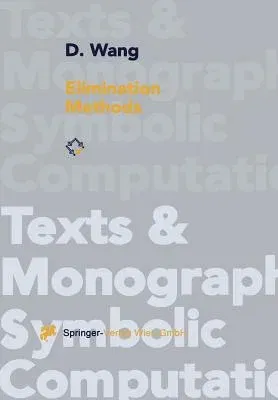D Wang
(Author)Elimination Methods (Softcover Reprint of the Original 1st 2001)Paperback - Softcover Reprint of the Original 1st 2001, 30 November 2000

Qty
1
Turbo
Ships in 2 - 3 days
In Stock
Free Delivery
Cash on Delivery
15 Days
Free Returns
Secure Checkout
Part of Series
Texts & Monographs in Symbolic Computation
Part of Series
Texts and Monographs in Symbolic Computation,
Part of Series
Texts and Monographs in Symbolic Computation
Print Length
244 pages
Language
English
Publisher
Springer
Date Published
30 Nov 2000
ISBN-10
3211832416
ISBN-13
9783211832417
Description
Product Details
Author:
Book Edition:
Softcover Reprint of the Original 1st 2001
Book Format:
Paperback
Country of Origin:
US
Date Published:
30 November 2000
Dimensions:
24.41 x
16.99 x
1.4 cm
ISBN-10:
3211832416
ISBN-13:
9783211832417
Language:
English
Location:
Vienna
Pages:
244
Publisher:
Series:
Weight:
426.38 gm

